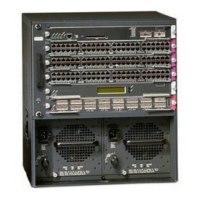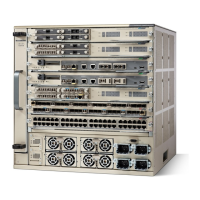8-18
Catalyst 6500 Series Switch and Cisco 7600 Series Router Firewall Services Module Configuration Guide
OL-6392-01
Chapter 8 Configuring IP Addresses, Routing, and DHCP
Configuring RIP
Configuring RIP
Single context mode only
Routed firewall mode only
This section describes how to configure Route Information Protocol (RIP), and includes:
• RIP Overview, page 8-18
• Enabling RIP, page 8-18
RIP Overview
Single context mode only
Routed firewall mode only
Devices that support RIP send routing-update messages at regular intervals and when the network
topology changes. These RIP packets contain information about the networks that the devices can reach,
as well as the number of routers or gateways that a packet must travel through to reach the destination
address. RIP generates more traffic than OSPF, but is easier to configure initially.
RIP has advantages over static routes because the initial configuration is simple, and you do not need to
update the configuration when the topology changes. The disadvantage to RIP is that there is more
network and processing overhead than static routing.
The FWSM uses a limited version of RIP; it does not send out RIP updates that identify the networks
that the FWSM can reach. However, you can enable one or both of the following methods:
• Passive RIP—The FWSM listens for RIP updates but does not send any updates about its networks
out of the interface.
Passive RIP allows the FWSM to learn about networks to which it is not directly connected.
• Default Route Updates—Instead of sending normal RIP updates that describe all the networks
reachable through the FWSM, the FWSM sends a default route to participating devices that
identifies the FWSM as the default gateway.
You can use the default route option with passive RIP, or alone. You might use the default route
option alone if you use static routes on the FWSM, but do not want to configure static routes on
downstream routers. Typically, you would not enable the default route option on the outside
interface, because the FWSM is not typically the default gateway for the upstream router.
Enabling RIP
Single context mode only
Routed firewall mode only
To enable RIP on an interface, enter the following command:
FWSM(config)# rip
interface_name
{default | passive} [version {1 | 2
[authentication {text | md5}
key key_id
]}]
You can both types of RIP on an interface by entering the command two times, one for each method.
